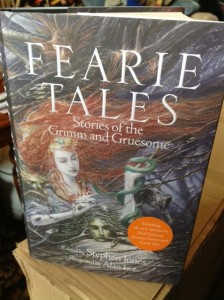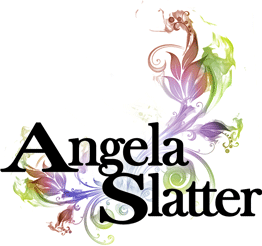 Fearie Tales: Stories of the Grimm and Gruesome is the forthcoming anthology from Jo Fletcher Books – edited by the inimitable Stephen Jones. The ToC includes the likes of Tanith Lee, Joanne Harris, Neil Gaiman, Michael Marshall Smith, Reggie Oliver, Ramsey Campbell, John Ajvide Lindqvist … for the full list, go here. Today’s post is the first in a series from the editor, some of the authors, and the publisher, looking at how we regard fairy tales.
Fearie Tales: Stories of the Grimm and Gruesome is the forthcoming anthology from Jo Fletcher Books – edited by the inimitable Stephen Jones. The ToC includes the likes of Tanith Lee, Joanne Harris, Neil Gaiman, Michael Marshall Smith, Reggie Oliver, Ramsey Campbell, John Ajvide Lindqvist … for the full list, go here. Today’s post is the first in a series from the editor, some of the authors, and the publisher, looking at how we regard fairy tales.
The editor, Mr Stephen Jones, is first cab off the rank.
IN THE EARLY years of the 19th century, German brothers Jacob (1785–1863) and Wilhelm (1786–1859) Grimm set out to collect folk stories from across Europe in an attempt to not only reflect a German cultural identity in such tales, but also to preserve stories that for centuries had been handed down through the generations in the oral tradition.
1. What is the fairy tale you remember most from your childhood – the one that made the biggest impression on you?
To be honest, I don’t think I was ever a very big fan of fairy tales. I’m sure I must have heard them all when I was small, but they didn’t really resonate with me in any particularly special way. I remember the Norwegian fairy tale ‘Three Billy Goats Gruff’ made quite an impression on me, but that was probably due to hearing Frank Luther’s version played over and over again on BBC radio’s Children’s Favourites in the late 1950s and early ’60s.
Along the same lines, I recall The Singing Ringing Tree, a deeply disturbing 1957 East German film shown on British TV by the BBC in the mid-1960s. I guess the fairy tale that really stuck with me as a child was Hans Christian Anderson’s ‘The Red Shoes’, which is truly horrific. From small acorns I guess . . .
2. Is there a natural link, do you think, between fairy tales and horror?
Oh, yes. Definitely. The Anderson tale above is a great example, and when I went back to read the original Brothers Grimm stories for Fearie Tales, I was struck by how many of the themes and imagery in classic fairy tales can also be found in horror fiction as well. The two are inextricably linked in my mind and, quite possibly, in the mind of the readers as well. At least I hope so.
3. What made you want to put together an anthology of this sort? 
I’m always looking for new ways to market horror anthologies. I had been aware of the popularity of TV series such as Grimm and Once Upon a Time, as well as the resurgence of all those Snow White movies and others based on classic fairy tales. So I started doing some research and thought, ‘What if some of the best horror writers of today took those tales as their inspiration and created their own versions for a modern readership?’
To be honest, it was pretty much a no-brainer, and when I outlined the concept to my publisher, Jo Fletcher, she basically accepted it on the spot. It was then just a matter of coming up with an interesting format and contacting the writers. Getting the legendary Alan Lee to illustrate it was simply a dream come true!
4. What do you think the fairy tale form offers to writers and readers?
I think it gives us an opportunity to go back and experience stories that have been with us for, in some cases, centuries. These tales speak to us on a deeper level – they are the basis of the myths and legends (or vice-versa) that have shaped mankind’s dreams – and, of course, nightmares – for countless generations.
For the writer, the fairy tale – in its basic form – is the wellspring from which all other myths and legends come from. For the reader, it takes them back to a simpler time, when perhaps they could be scared or enthralled by tales of mystery and magic. In Victorian times they were used as a warning to children to behave, although I very much doubt that they would have a similar influence on the youngsters of today!
 5. Do you think readers will ever grow tired of fairy tales?
5. Do you think readers will ever grow tired of fairy tales?
I don’t think so. As the contributors to Fearie Tales prove (along with other writers who have worked in the same form), there are always new ways to reinterpret the old stories for a modern audience. If we keep reinventing them for successive generations, then I believe that the essence of each fairy tale will continue to entertain audiences for many centuries to come.
In fact, that gives me an idea – maybe I’ll try putting together a science fiction anthology next time, based on the same source material: The Brothers Grimm in Outer Space!

